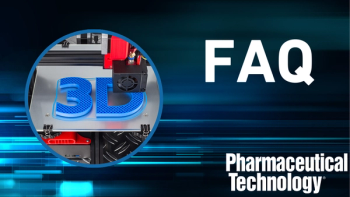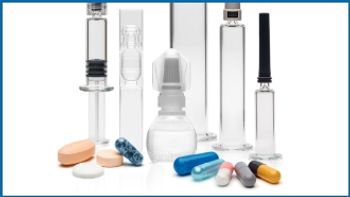
- Pharmaceutical Technology-09-02-2014
- Volume 38
- Issue 9
Using Ultrasonic Cleaning for Equipment and Tooling
Ultrasonic cleaning of solid-dosage tooling and other equipment, such as filling-machine valves and nozzles, is more effective than hand cleaning.
In pharmaceutical manufacturing, it is imperative to remove all dirt, debris, and abrasive contaminants, as well as molds, bacteria, and toxic chemicals from equipment parts. Pharmaceutical manufacturers have successfully used ultrasonic cleaning to clean solid-dosage tooling, such as pill punches and molds, as well as other equipment, such as filling-machine valves and nozzles, for years. Cleaning these molds, filling valves, and hoses by hand with a variety of implements, such as toothbrushes or wire brushes, is labor intensive and not always effective because brushes cannot reach many internal surfaces. In addition, hand cleaning or simple agitation often requires fairly aggressive sterilizing cleaners, which in some instances may require technicians to wear extensive protective gear. Vertical agitation and high impact spray cleaning are other alternatives to hand cleaning, but because contaminants often settle into minute cracks and crevices that are hard to reach, ultrasonic cleaning is the most reliable method to remove them. Ultrasonic cleaning eliminates hand labor and allows the entire surface to be cleaned. In addition, ultrasonic cleaning can sterilize equipment if the item is cleaned with 60 C deionized water and the item’s full surface comes in contact with the ultrasonic wash.
In the ultrasonic cleaning process, a technician places the dirty parts into a stainless-steel basket and submerges it into the ultrasonic cleaning tank, which contains an environmentally friendly, water-based cleaning soap. An energy-converting transducer produces sonic frequencies approaching 40,000 cycles per second, creating millions of microscopic vacuum bubbles that implode when they come in contact with a surface. Cleaning occurs because energy is released by the creation and collapse (called cavitation) of these bubbles. The resultant shock waves break up and lift off dirt, residue, and other contaminants. The implosions work similarly to small vacuum cleaners that literally pull off caked-on pill residue from any area. Threads, blind holes, and internal cavities are efficiently cleaned when the water-based solution comes in contact with these otherwise inaccessible areas. The contamination is lifted from the machined face and carried away as a suspended particle.
Ultrasonic equipment used in pharmaceutical applications typically is equipped with multi-stage filtration systems so that these floating particulates are filtered out with a micron filter and kept from reattaching to a different area of the part. The micron filters vary in pore size and can be as large as 20 microns and charcoal-based to pull out oils, or as low as a one micron. Manufacturers can use two different rinse baths with different sized filters so that there are no particulates bigger than the smallest filter passing back into the bath.
Parts that are cleaned more thoroughly, such as pill punches or machinery parts with internal mold passages, will not clog with contamination as quickly, which allows pharmaceutical manufacturers to extend the time between scheduled routine maintenance for machinery parts and thus improve productivity. Other benefits of ultrasonic cleaning are lower labor costs and less employee contact with potentially harsh chemicals.
About the Author
Frank Pedeflous is president of Omegasonics, omegasonics@omegasonics.com.
Articles in this issue
over 11 years ago
Investigation of Various Impurities in Febuxostatover 11 years ago
Asymmetric Synthesis Continues to Advanceover 11 years ago
Using Quality by Design to Develop Robust Chromatographic Methodsover 11 years ago
Waters QTof Mass Spectrometer Detects Low-Level Compoundsover 11 years ago
Xylem Polarimeters Measure Chiral Compoundsover 11 years ago
Extending the Scope of Pharmacovigilance Comes at a Priceover 11 years ago
Minimizing Variation in Vial Withdrawal Practiceover 11 years ago
The Relevance of Industry Technical Associationsover 11 years ago
Thermo Fisher Scientific UHPLC System Improves Productivityover 11 years ago
Excellims Ion-Mobility Separator Interfaces with Mass SpectrometersNewsletter
Get the essential updates shaping the future of pharma manufacturing and compliance—subscribe today to Pharmaceutical Technology and never miss a breakthrough.





